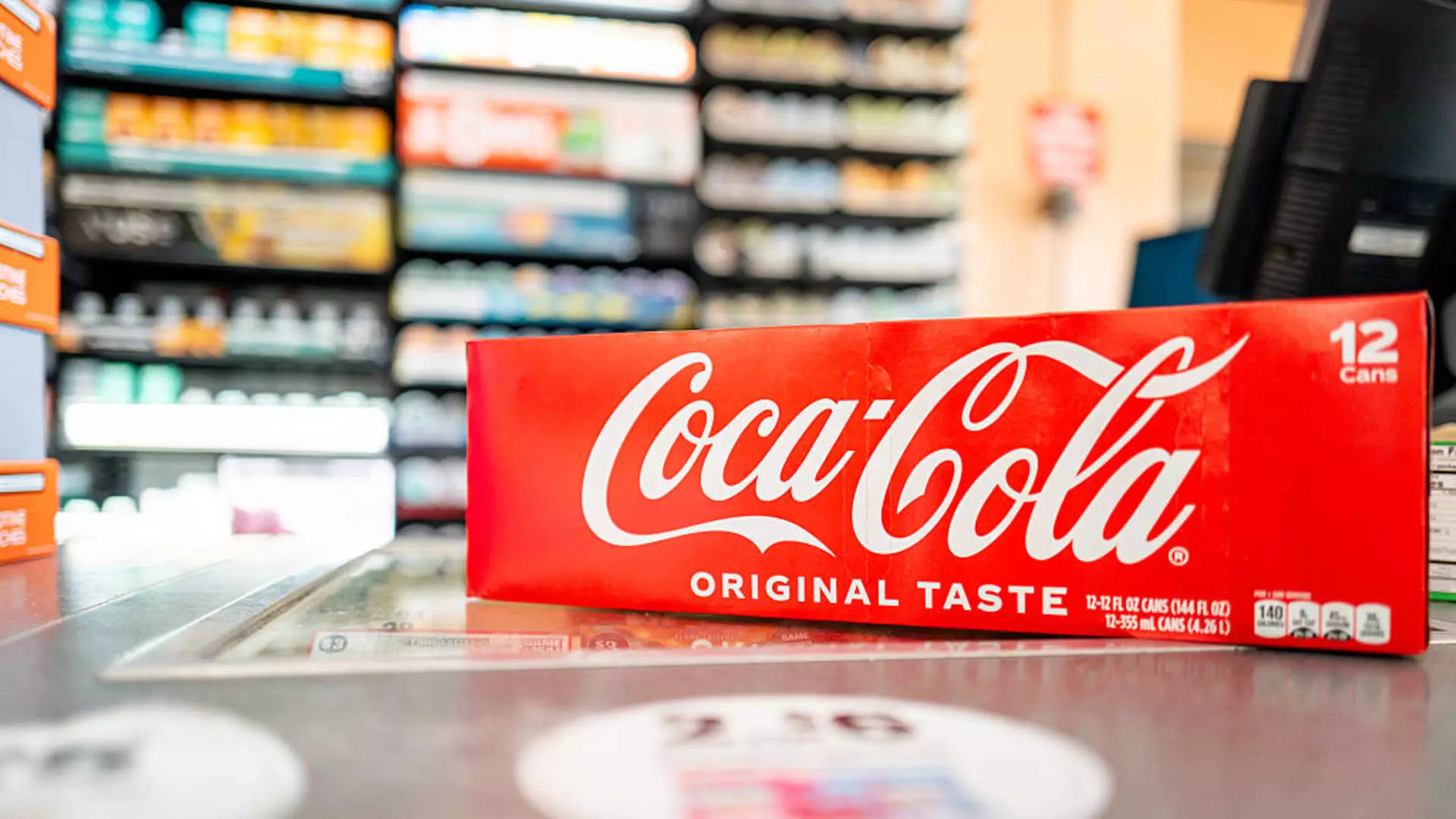When Coca-Cola announced its latest quarterly results, many analysts and investors cheered as the company beat expectations on paper. But behind the veneer of impressive figures lies a sobering reality: the core challenges facing this beverage giant remain unresolved. Despite reporting adjusted earnings of 87 cents per share versus the expected 83 cents, and a modest revenue increase to $12.62 billion, these numbers are more a reflection of selective geographic strength than an indication of a healthier, more sustainable business model.
It’s worth questioning whether these wins are genuinely meaningful or just superficial fluctuations. The market’s reaction—a less than 1% decline in premarket trading—reveals the fragility of any sense of triumphant revival. Investors may want to celebrate, but a deeper analysis suggests that Coca-Cola’s so-called resilience is fragile and increasingly dependent on isolated regional gains rather than global momentum.
Volume Decline: A Harbinger of Trouble
More troubling than the headlines is the persistent decline in consumer demand. Coca-Cola’s global unit case volume shrank by 1% despite the revenue uptick. This disconnect between sales figures and volume indicates that price hikes and currency fluctuations may be temporarily masking declining consumer interest. The fact that only the EMEA region showed volume growth (3%) while markets like Latin America and Asia-Pacific contracted by 2% and 3% respectively underscores the uneven, unstable nature of global demand.
The trend isn’t just about numbers—it reflects broader economic and social shifts that the company struggles to contend with. Economic uncertainty, inflation, and geopolitical tensions are dampening consumer confidence worldwide, and Coca-Cola, often considered a barometer of consumer sentiment, is feeling the heat. Its reliance on pricing strategies to boost revenue masks a deeper struggle: craving consumer loyalty in a rapidly changing market.
Regional Performance: A Tale of Contrasts
While some regions like Europe, Middle East, and Africa showed improvement in volume, North America still witnessed a 1% decline. CEO James Quincey claims that strategic initiatives are working, but these are isolated snapshots rather than signs of broad-based recovery. For example, the U.S., often considered Coca-Cola’s most resilient market, shows only superficial signs of life amid a climate of stubbornly high inflation and shifting consumer habits that favor healthier or alternative options.
The social media controversy involving alleged reporting of undocumented workers appears to have temporarily dampened sales in Hispanic markets. The damage from such reputation issues — whether real or perceived — demonstrates Coca-Cola’s vulnerability to brand risks that can quickly erode consumer trust. The company’s denunciation of rumors did little to stem the decline, illustrating how fragile its social license is in sensitive markets.
Product Segment Dynamics and Future Outlook
Despite its diversified portfolio—ranging from water to coffee—Coca-Cola’s core sparkling soft drinks continue to decline, with a 1% drop in volume. Meanwhile, segments like juice and plant-based beverages are shrinking faster, at 4%. These downward trends suggest that even product innovation can’t fully counteract shifting preferences toward healthier or more sustainable choices.
The company’s plan to reintroduce its signature cola made with cane sugar in the U.S. this fall appears more like a tactical response rather than a strategic shift. It’s an attempt to revive nostalgic demand, but whether this can reverse the underlying decline remains doubtful.
Coca-Cola’s forecast of a 3% growth in earnings per share for the year and a 5-6% increase in organic revenue looks more like optimistic wishful thinking than a reflection of actual market strength. As inflation continues to bite and consumers become more discerning, the company’s reliance on price increases and selective regional success will likely prove insufficient to sustain long-term growth.
The Illusion of Strength in a Volatile World
Coca-Cola’s recent performance exemplifies a broader issue facing global brands: the illusion of strength amid an era of profound disruption. As a company that once symbolized stability and universal appeal, Coca-Cola now faces the uncomfortable truth that it is increasingly out of step with modern consumer values. The decline in volume, the regional disparities, and the social media-fueled reputation hits reveal the cracks in its facade.
In essence, Coca-Cola’s story is one of superficial recovery masking underlying vulnerabilities. The company appears to be weathering the storm, but beneath the surface, it grapples with fundamental shifts in demand, social consciousness, and economic realities. Without meaningful innovation and a reassessment of its core relevance, Coca-Cola risks becoming a relic of a bygone era—despite the shiny surface of quarterly earnings figures.

